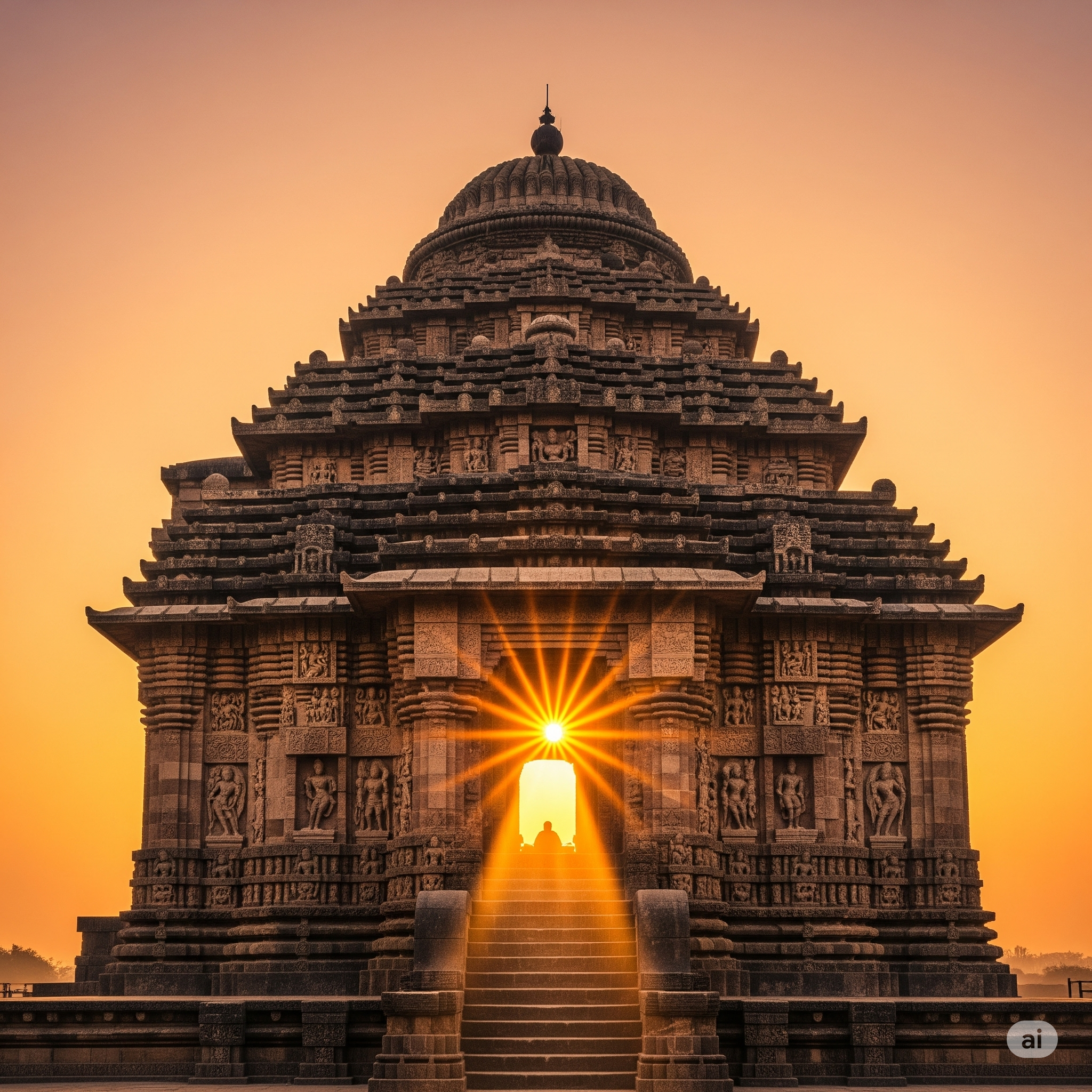Ancient Wisdom Written in Stone
Temples in ancient India were not just places of worship. They were meticulously designed astronomical observatories, blending science, art, and spirituality. From aligning with solstices to tracking planetary movements, many Indian temples reveal a deep understanding of the cosmos.
Unlike modern astronomy labs, these were open-air stone structures calibrated with celestial precision. For curious minds, they offer a glimpse into a civilization where science and spirituality were deeply intertwined.
☀️ Sun Alignments and Temple Orientation
🌞 Sun Temples of Konark and Modhera
- Konark Sun Temple, Odisha is designed so that the first rays of the rising sun strike the main sanctum.
- Modhera Sun Temple, Gujarat is aligned with the equinoxes. On those days, sunlight directly illuminates the deity inside.
These temples weren’t just about symbolism—they helped people track agricultural cycles, seasons, and solstices.
“Our ancestors used sunlight like a cosmic calendar,” says archaeologist Dr. Kavita Singh.
🌿 Temple Layouts and Directions
Most temples follow the Vastu Shastra, which incorporates cosmic geometry. The placement of the sanctum (garbhagriha) is often aligned with cardinal directions, especially east.
🌌 Stellar Alignments and Nakshatras
In temples like Brihadeeswarar Temple (Tamil Nadu), inscriptions mention nakshatras (lunar constellations), used to time rituals and festivals.
Stone Calendars and Star Maps
- Jantar Mantar in Delhi and Jaipur (though not temples) follow this lineage, with precise astronomical instruments.
- Chennakesava Temple in Belur is believed to be aligned with the Makara Sankranti sunrise.
Some scholars suggest carvings depict planetary deities, eclipses, and zodiac signs.
🕒 Temples as Timekeepers
The interplay of light and shadow was used to mark time:
- The Meenakshi Temple (Madurai) uses gnomon-like structures to track solar movements.
- The Virupaksha Temple in Hampi creates a natural sundial during solstice.
These systems helped farmers, priests, and astrologers synchronize calendars without modern tools.
🌿 Symbolism in Architecture
Indian temples integrate cosmic symbolism:
- The shikhara (spire) represents Mount Meru, the center of the universe.
- The mandala layout reflects cosmic order.
- The number of steps, pillars, or tiers often corresponds to celestial numbers (like 12 zodiac signs or 27 nakshatras).
“The temple is a cosmic replica. Walking through it was like walking through the universe,” explains historian Devdutt Pattanaik.
🌍 What This Means for Us Today
Ancient Indian temples are living museums. They show how advanced observational astronomy can be embedded in cultural spaces. They bridge science and spirituality without the binaries we use today.
For travelers, researchers, and spiritual seekers, these temples are more than heritage sites—they’re cosmic classrooms.









+ There are no comments
Add yours